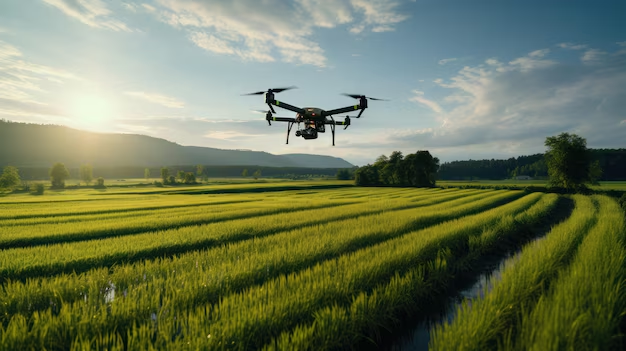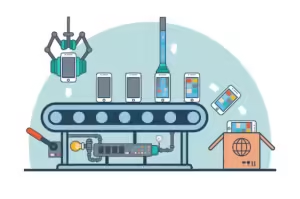Agriculture has always been the backbone of human civilization, but in today’s digital era, traditional farming methods are evolving rapidly. With the increasing global demand for food, farmers are turning to smart agriculture to enhance productivity, optimize resource usage, and improve crop yields. One of the key enablers of this transformation is wireless networking, which allows real-time monitoring, automation, and data-driven decision-making in farming.
Precision farming, a modern agricultural approach, leverages IoT (Internet of Things), AI (Artificial Intelligence), sensors, and big data analytics to ensure efficient use of resources such as water, fertilizers, and pesticides. However, to make these systems work seamlessly, a robust and reliable wireless network infrastructure is essential. By integrating 5G, LPWAN (LoRa, NB-IoT), Wi-Fi, and satellite communication, farmers can access real-time data from their fields, livestock, and equipment—enabling smarter, more efficient farming practices.
This blog explores how wireless networking is revolutionizing precision agriculture, its key applications, challenges, and future trends that will shape the farming industry.
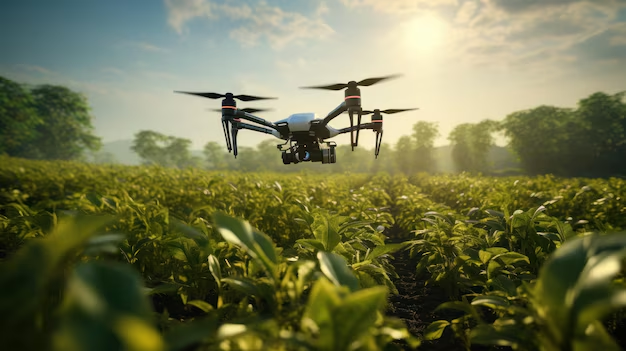
Role of Wireless Networking in Smart Agriculture
Wireless networking is a game-changer in modern agriculture, enabling seamless connectivity between smart farming devices, real-time data collection, and remote decision-making. By leveraging wireless communication technologies, farmers can monitor field conditions, optimize resource usage, and automate farm operations with minimal human intervention.
1. Connectivity Solutions in Agriculture
Farms are often spread across large areas, requiring robust and reliable connectivity. Various wireless networking technologies help bridge this gap:
- Wi-Fi & Bluetooth – Ideal for short-range communication in farmhouses, greenhouses, and storage units.
- LoRa (Long Range) & NB-IoT (Narrowband IoT) – Suitable for low-power, long-range applications like soil and weather monitoring.
- 5G & 4G LTE – Enables high-speed data transmission for real-time automation and drone communication.
- Satellite Communication – Essential for farms in remote areas with limited terrestrial network access.

2. Real-Time Data Transmission and Monitoring
Wireless networks play a crucial role in transmitting data from sensors placed in fields, water sources, and livestock areas. These networks facilitate:
- Soil and Crop Health Monitoring – Wireless sensors track soil moisture, pH levels, and nutrient content, ensuring precise fertilizer and water application.
- Weather Condition Tracking – Smart weather stations provide real-time climate data to optimize irrigation and protect crops from adverse conditions.
- Automated Farm Equipment – Tractors, irrigation systems, and drones operate autonomously based on wireless data inputs.

3. Remote Sensing and Drones in Agriculture
Drones equipped with wireless networking capabilities are revolutionizing crop surveillance and farm management:
- Aerial Crop Inspection – Drones with multispectral cameras identify crop diseases, detect nutrient deficiencies, and assess plant health.
- Precision Spraying – Drones wirelessly connected to farm management systems apply pesticides and fertilizers accurately, reducing waste.
- Livestock Monitoring – Wireless sensors and RFID tags track animal movement, health, and feeding patterns, reducing manual labor.

4. Smart Irrigation and Resource Optimization
Wireless connectivity enables IoT-based smart irrigation systems, ensuring efficient water use by:
- Automating irrigation based on soil moisture levels
- Reducing water wastage and energy consumption
- Enabling remote control of irrigation pumps and valves

5. Enhancing Supply Chain and Market Connectivity
Wireless networking connects farmers directly to markets, suppliers, and distributors, enabling:
- Real-time tracking of produce from farm to table
- Access to weather forecasts and market trends
- Remote farm management through mobile applications
By integrating wireless networking into smart agriculture, farmers can improve productivity, reduce operational costs, and make data-driven decisions—ultimately leading to sustainable and efficient farming.
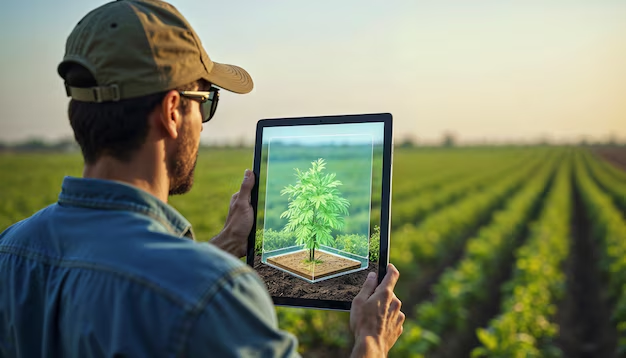
Applications of Wireless Networking in Precision Farming
Wireless networking is at the core of precision farming, enabling real-time data collection, automation, and improved decision-making. By integrating IoT sensors, drones, AI, and cloud computing, farmers can optimize agricultural processes and maximize productivity. Below are some key applications of wireless networking in precision farming:
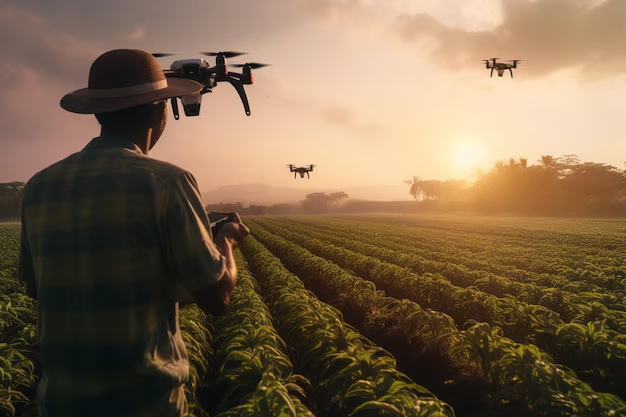
1. Automated Irrigation Systems
Wireless networking allows for smart irrigation systems that optimize water usage based on real-time soil and weather conditions.
- IoT soil moisture sensors wirelessly transmit data, ensuring precise water delivery.
- AI-powered irrigation systems adjust watering schedules automatically.
- Remote monitoring and control of water pumps via mobile applications.
2. Livestock Health and Movement Monitoring
Farmers can track the health and location of their livestock in real time using wireless sensors and RFID tags.
- Wearable sensors detect temperature, heart rate, and movement patterns, helping identify health issues early.
- GPS-enabled wireless collars track grazing patterns and prevent livestock from wandering off.
- Automated feeding systems adjust diet and portions based on real-time data.
3. Pest and Disease Detection
Wireless-connected drones and sensor networks help detect crop diseases and pest infestations before they spread.
- AI-powered image recognition in drones identifies plant stress and pest activity.
- Wireless sensor networks monitor air quality, humidity, and temperature to predict disease outbreaks.
- Automated pesticide spraying systems reduce chemical waste and improve efficiency.
4. Smart Greenhouses
Wireless networking enables fully automated climate-controlled greenhouses, optimizing plant growth conditions.
- Wireless temperature and humidity sensors adjust ventilation and shading.
- Remote-controlled irrigation and lighting systems reduce manual labor.
- Cloud-based monitoring allows farmers to manage greenhouse conditions from anywhere.
5. Drone-Based Precision Farming
Drones equipped with high-resolution cameras and wireless connectivity improve farm management.
- Aerial imaging helps analyze crop health, soil conditions, and water distribution.
- Variable-rate application of fertilizers and pesticides ensures targeted treatment.
- Wireless real-time data transmission allows instant analysis and response.
6. Real-Time Weather Monitoring and Forecasting
Wireless networks integrate with smart weather stations to provide farmers with up-to-date climate data.
- Sensor-based weather prediction models help farmers plan irrigation, harvesting, and fertilization.
- Wireless alerts and notifications inform farmers about extreme weather conditions.
- AI-driven climate analysis assists in long-term agricultural planning.
7. Autonomous Farm Machinery and Robotics
Wireless networking supports self-driving tractors, robotic harvesters, and automated spraying drones.
- Wireless connectivity enables machine-to-machine (M2M) communication for synchronized farming operations.
- AI-driven automation reduces labor costs and enhances precision.
- Remote monitoring ensures efficient operation of farming equipment.
8. Smart Supply Chain and Logistics Management
Wireless networking helps in tracking and managing agricultural produce from farm to market.
- GPS-enabled smart logistics systems optimize transport routes for fresh produce.
- IoT sensors in storage facilities monitor humidity, temperature, and spoilage risks.
- Blockchain integration ensures transparent and secure transactions in the supply chain.
9. Wireless Soil Health Monitoring
Wireless sensor networks track soil quality metrics such as:
- Moisture levels, pH balance, and nutrient content for precise fertilization.
- Wireless data transmission to cloud platforms for AI-driven recommendations.
- Long-term soil analysis for sustainable farming practices.
10. Remote Farm Management via Mobile Apps
Wireless connectivity allows farmers to manage their entire farm remotely using smartphones.
- Real-time alerts on crop health, livestock status, and weather conditions.
- Automated control of irrigation, fertilization, and harvesting systems.
- Data-driven decision-making for better farm productivity.

Conclusion
Wireless networking has revolutionized precision farming, enabling real-time monitoring, automation, and data-driven decision-making. By integrating IoT sensors, drones, and AI-powered analytics, farmers can optimize irrigation, monitor livestock health, detect crop diseases, and automate farm machinery. These advancements not only enhance productivity but also minimize resource wastage, making agriculture more efficient and sustainable.
As wireless connectivity continues to evolve with 5G, LoRa, and satellite communication, the future of smart agriculture looks even more promising. With improved network reliability and coverage, even remote farms can leverage smart farming technologies to boost yields and streamline operations. By adopting wireless-enabled solutions, the agricultural industry can ensure food security, reduce environmental impact, and create a more resilient farming ecosystem

